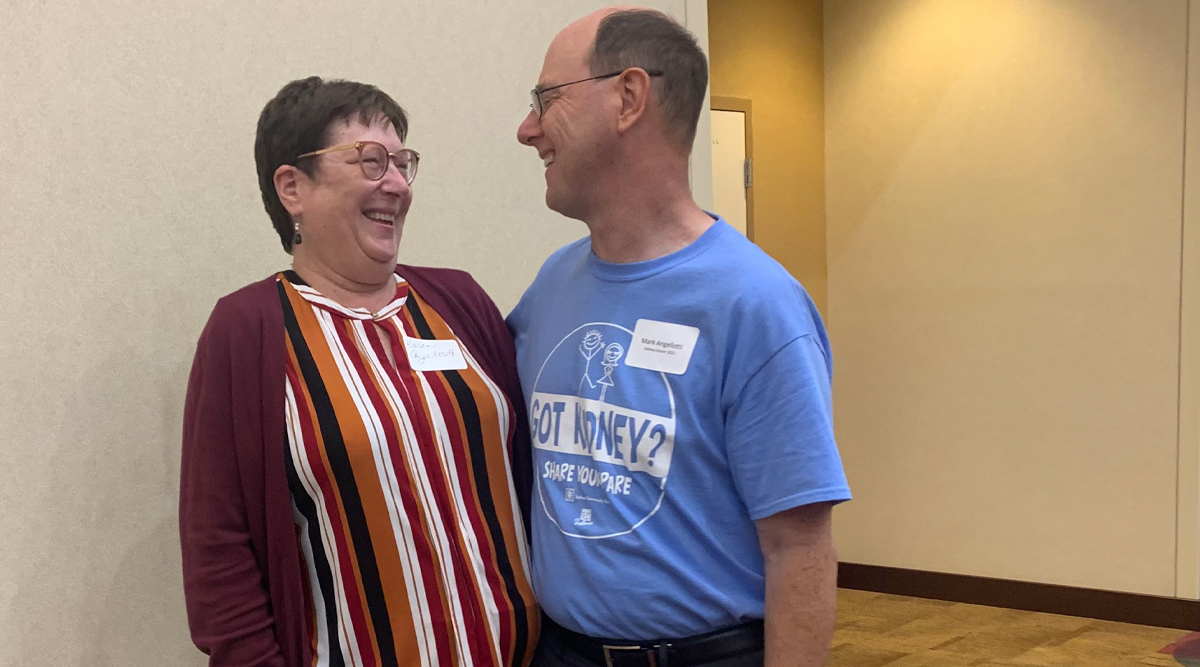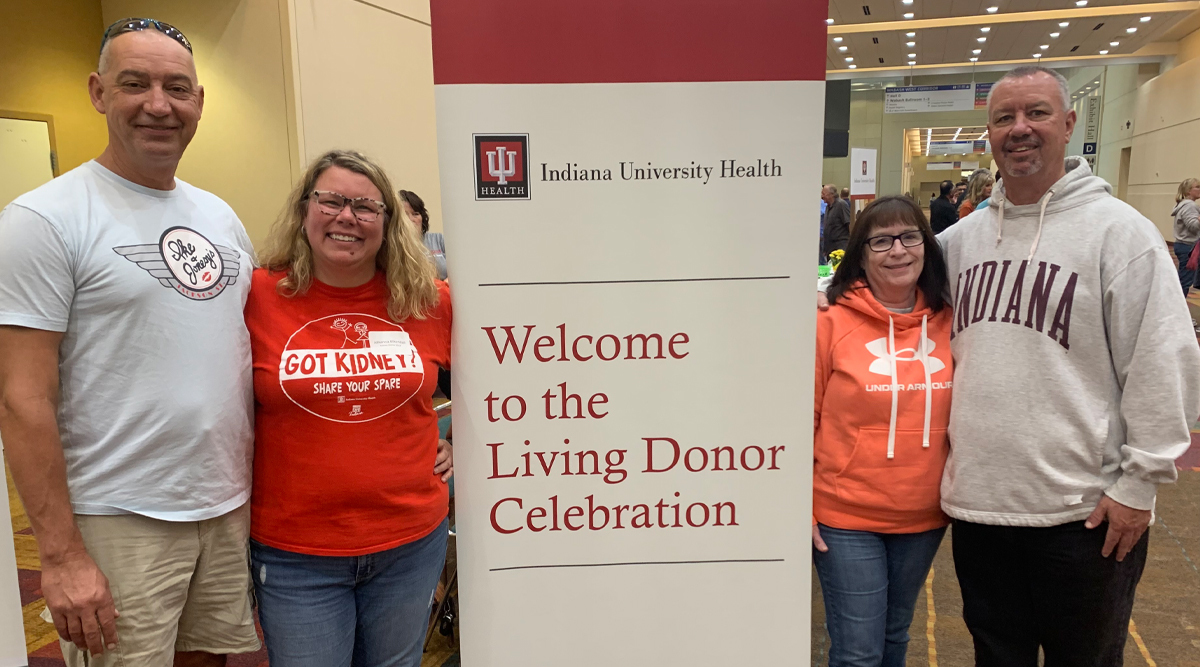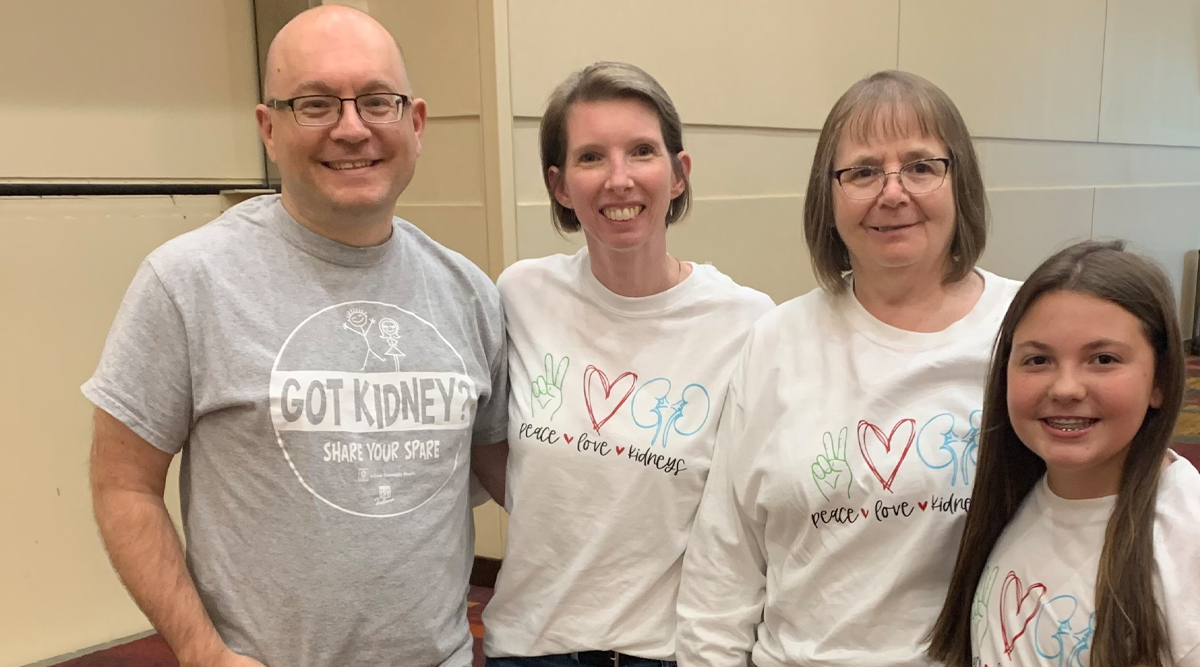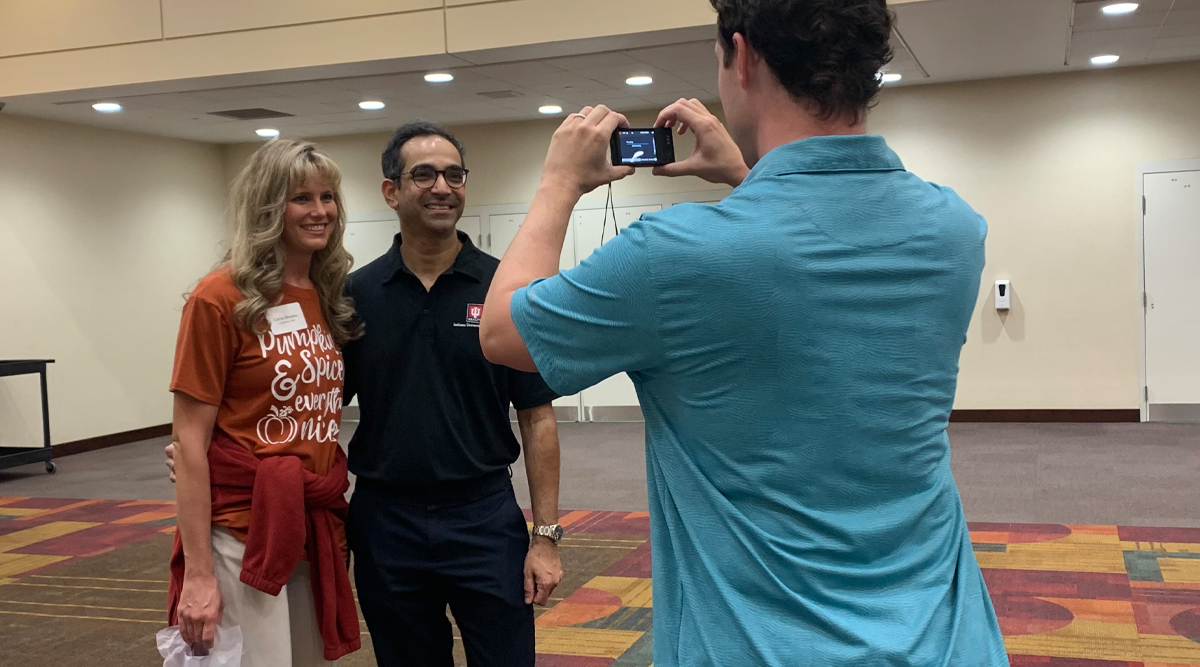By IU Health Senior Journalist, TJ Banes, tfender1@iuhealth.org
They’ve been called, “Heroes,” “Angels,” and “Warriors.” They are the living organ donors who saved a life. This week, IU Health celebrated those champions who offered the gift of life through liver and kidney donations.
In a special event, people who donated a life-saving organ in the past four years, were treated to a reception and Indians Baseball game. The event is typically held every two years, honoring those who were organ donors during that timeframe. The 2020 event was postponed due to the pandemic, so this year’s event was one of the largest in its history.
Since the first appreciation event in 2010, hundreds of living donors have been celebrated by IU Health. But for their recipients, these donors are celebrated every day.

Karen Angellotti beamed as her husband, Mark, talked about donating his kidney to her in January of 2021. She had been on dialysis for over a year leading up to the transplant. The couple married in 2001 and Mark said: “When you have a leading nephrologist tell you the downside of dialysis, you know what you have to do.”
Johanna Kikendall attended the event with her husband, Steve Kikendall, her brother-in-law, Jack Kikendall, and his wife, Sherrie Kikendall. Johanna was the living kidney donor for Jack Kikendall.
“He’s not just my brother-in-law, he’s my husband’s best friend and if something happened to him, my husband would never be the same,” she said.

IU Health Dr. Jonathan Fridell, chief of abdominal transplant and surgical director of the pancreas transplant program, told the guests that this month, the United States marked a historical milestone achieving one million transplants. “That was made possible by each of you in this room,” he said.
According to Donate Life Indiana, more than 100,000 men, women and children nationally are waiting at any given moment for a lifesaving organ transplant. More than 1,000 of those waiting are Hoosiers. Last year 4.2 million Hoosiers signed up to be organ donors; 276 organ donors saved the lives of others needing lifesaving transplants, 949 lifesaving organs were transplanted to recipients.
At IU Health many recipients receive kidney and liver transplants from living donors. As of August 2022, surgeons at IU Health performed 162 kidney transplants (158 adult and four pediatric) this year.
Living kidney donors help give renewed health to people experiencing kidney failure. Living donors reduce or eliminate the need for patients to start dialysis and a healthy kidney from a living donor can function better and last longer than a kidney from a deceased donor.
A living kidney donor isn’t necessarily related to the recipient. Compatibility is based on blood type and tissue typing. Age and size are also taken into consideration. If a healthy donor is incompatible with the intended recipient, the donor may opt to be part of paired donation. Also known as “donor swap” recipient /donor pairs are matched according to compatibility. Over the years, IU Health’s kidney transplant team has performed a number of paired donations. Some chains have included multiple people.
Chad Hoefle donated his kidney to a stranger in November of 2021. He was joined at the reception by his wife Melanie Hoefle, mother, Mary Bartkowiak, and niece Jordyn Kamp.

In July 2020 IU Health restarted the living liver transplantation program. Since then, the transplant team has performed 22 living donor transplants.
Carrie Rhodes was eager to see her surgeon, Dr. Chandrashekhar Kubal. As she greeted the doctor who supported her through one of the biggest decisions of her life, Rhodes’ husband took a photo of the two. Rhodes was the first non-directed living liver donor in August of 2020. She and her husband have since become acquainted with her recipient and his wife.
“It was a faith-based decision. I felt Jesus blessed my life and I felt called to help someone else,” said Rhodes.

As of August 2022, IU Health performed 100 liver transplants this year, (95 adult and five pediatric). Some of those transplants were a result of living donation. Donate Life America reports there are 14,000 people in the United States on the waiting list at any given time for a liver transplant. The number of patients waiting far surpasses the number of deceased donors. Many patients spend years waiting for a liver donor. Living donors reduce that wait time. An organ from a living donor can function better and last longer than one from a deceased donor because it is healthy. Like kidney donation, liver donation is done by working with a team of IU Health transplant experts including surgeons, donor coordinators, social workers, dietitians, pharmacists, and financial coordinators.
Living donors undergo an initial screening, multiple tests and evaluations. The transplant involves removing a portion of the donor’s liver and then using it to replace the diseased liver in the recipient. The liver regenerates and returns to full function within a month. Both kidney and liver donors are typically discharged from the hospital within a few days.
“It’s a highlight seeing you all here and knowing you are doing so well,” said IU Health Dr. Asif Sharfuddin, who serves as medical director of kidney and pancreas transplantation.
As he asked each living donor to stand, the room erupted in applause.
“If you are standing next to a living donor, thank them,” said Dr. Sharfuddin.
Watch for a video next week on IU Health Facebook to learn more about this special event.
